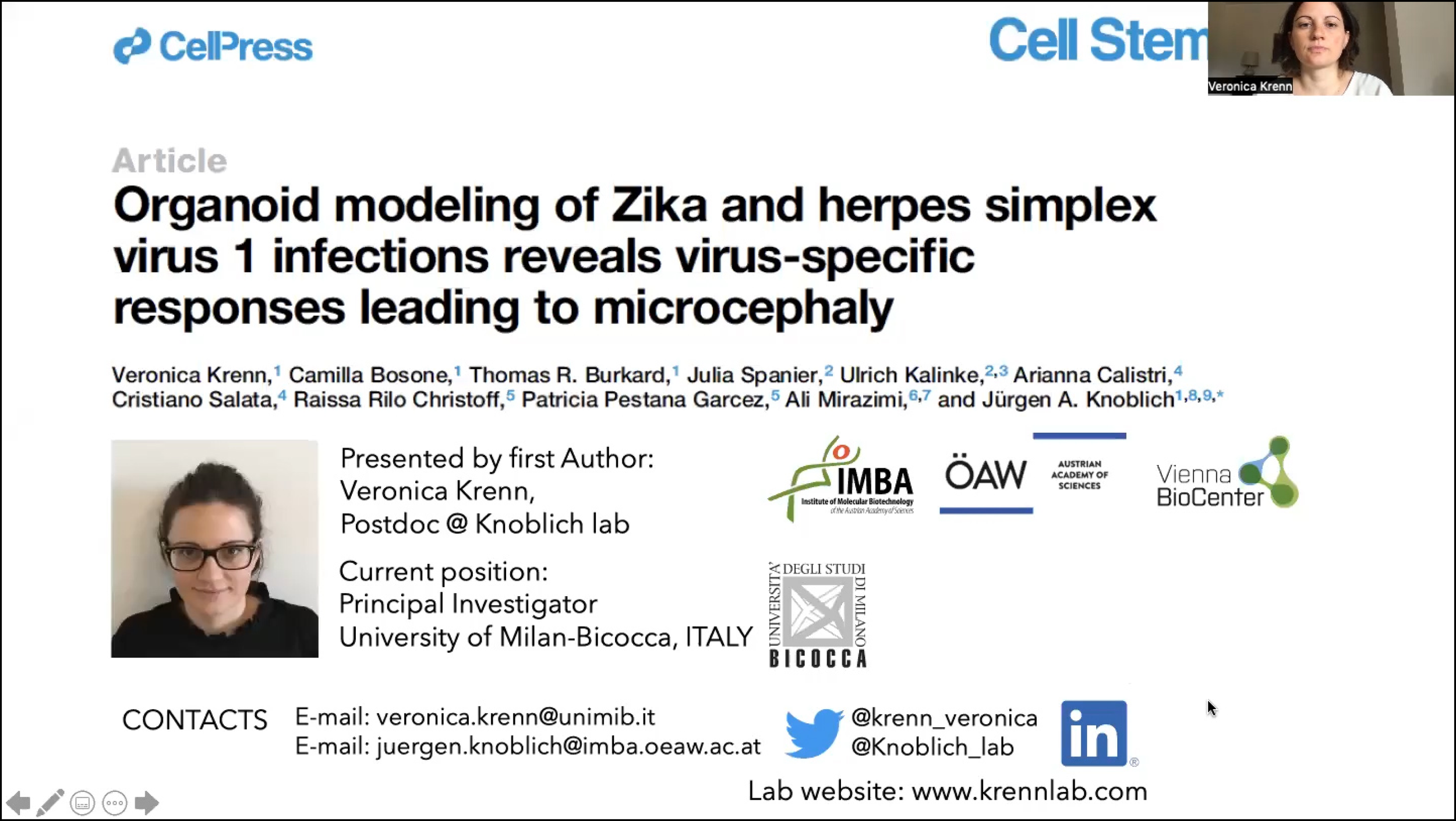Organoid modeling of Zika and herpes simplex virus 1 infections reveals virus-specific responses leading to microcephaly
Veronica Krenn1, Camilla Bosone1, Thomas R Burkard1, Julia Spanier2, Ulrich Kalinke3, Arianna Calistri4, Cristiano Salata4, Raissa Rilo Christoff5, Patricia Pestana Garcez5, Ali Mirazimi6, Jürgen A Knoblich7
- Institute of Molecular Biotechnology (IMBA), Austrian Academy of Sciences, Vienna BioCenter (VBC), Vienna 1030, Austria.
- Institute for Experimental Infection Research, TWINCORE, Centre for Experimental and Clinical Infection Research, a Joint Venture between the Helmholtz Centre for Infection Research, Braunschweig, and the Hanover Medical School, Hanover 30625, Germany.
- Institute for Experimental Infection Research, TWINCORE, Centre for Experimental and Clinical Infection Research, a Joint Venture between the Helmholtz Centre for Infection Research, Braunschweig, and the Hanover Medical School, Hanover 30625, Germany; Cluster of Excellence - Resolving Infection Susceptibility (RESIST), Hanover Medical School, Hanover 30625, Germany.
- Department of Molecular Medicine, University of Padua, Padua 35121, Italy.
- Institute of Biomedical Sciences, Federal University of Rio de Janeiro, Rio de Janeiro 21941-901, Brazil.
- Department of Laboratory Medicine (LABMED), Karolinska Institute, Stockholm 17177, Sweden; National Veterinary Institute, Uppsala 75189, Sweden.
- Institute of Molecular Biotechnology (IMBA), Austrian Academy of Sciences, Vienna BioCenter (VBC), Vienna 1030, Austria; Medical University of Vienna, Vienna 1030, Austria. Electronic address: juergen.knoblich@imba.oeaw.ac.at.
Abstract
Viral infection in early pregnancy is a major cause of microcephaly. However, how distinct viruses impair human brain development remains poorly understood. Here we use human brain organoids to study the mechanisms underlying microcephaly caused by Zika virus (ZIKV) and herpes simplex virus (HSV-1). We find that both viruses efficiently replicate in brain organoids and attenuate their growth by causing cell death. However, transcriptional profiling reveals that ZIKV and HSV-1 elicit distinct cellular responses and that HSV-1 uniquely impairs neuroepithelial identity. Furthermore, we demonstrate that, although both viruses fail to potently induce the type I interferon system, the organoid defects caused by their infection can be rescued by distinct type I interferons. These phenotypes are not seen in 2D cultures, highlighting the superiority of brain organoids in modeling viral infections. These results uncover virus-specific mechanisms and complex cellular immune defenses associated with virus-induced microcephaly.
Presented By Veronica Krenn | ORCID iD

